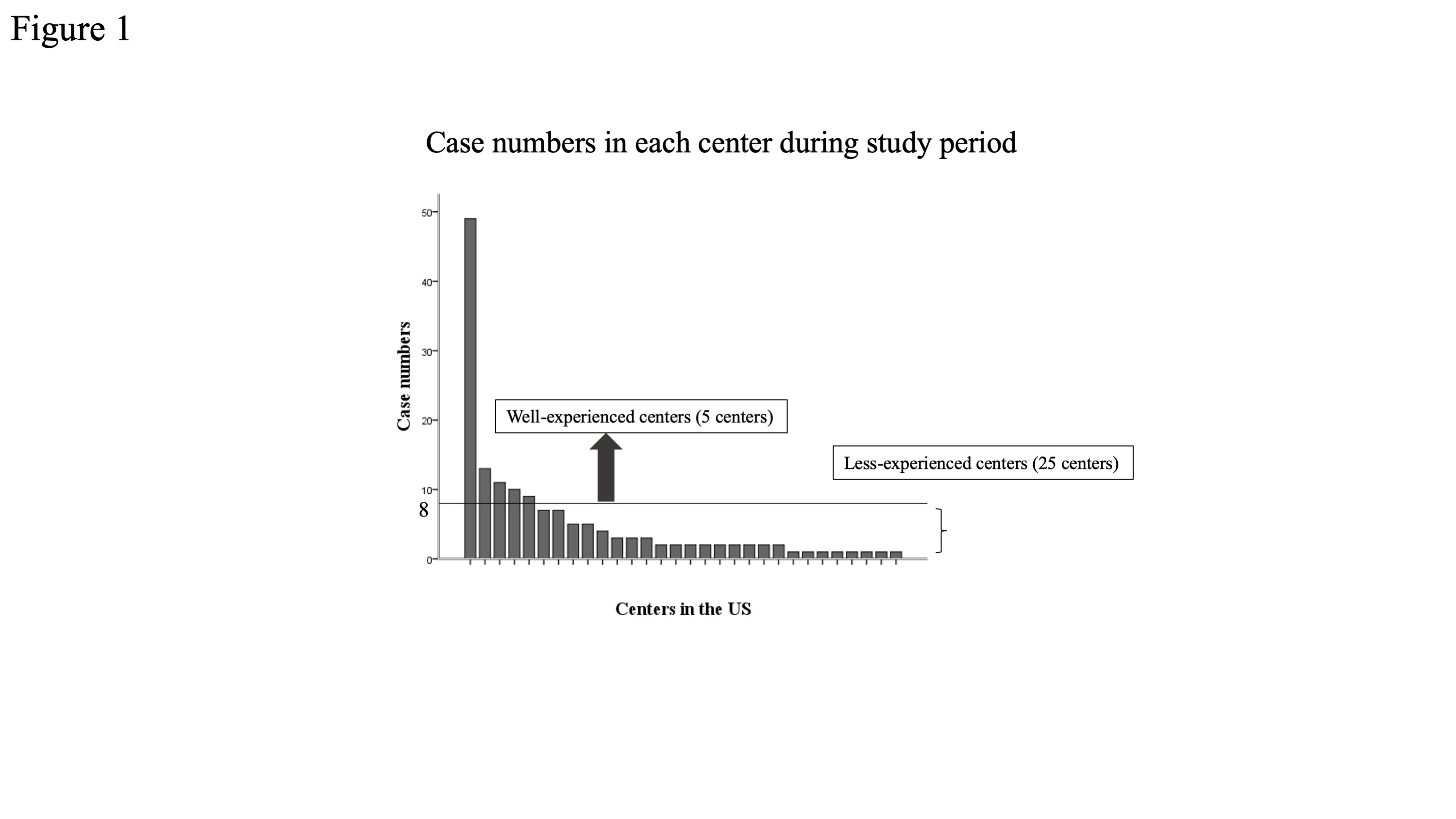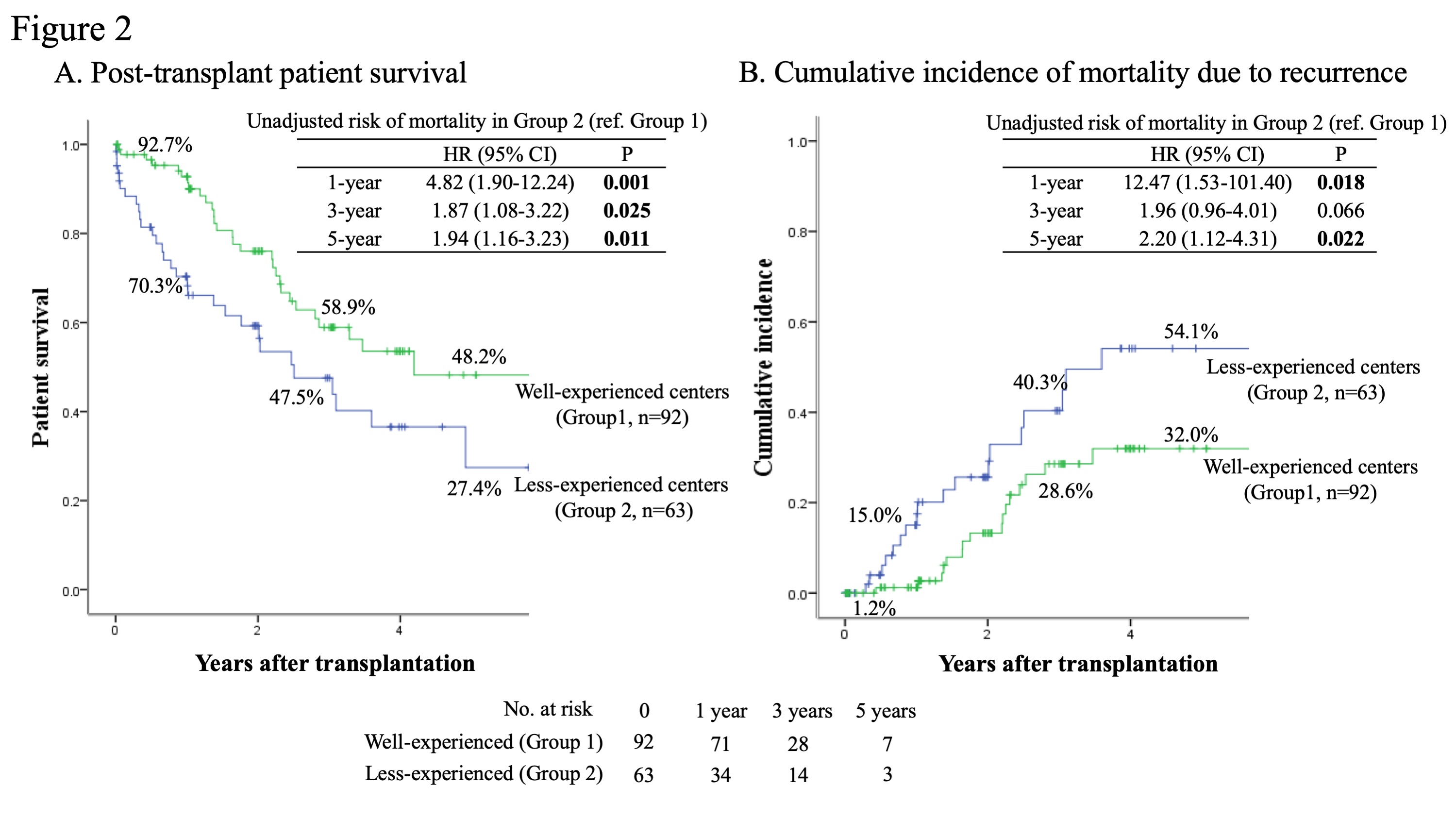Center Effects on Post-Transplant Outcomes in Liver Transplantation for Hilar Cholangiocarcinoma
1Henry Ford Hospital, Detroit, MI, 2University of Toronto, Toronto, ON, Canada, 3Kumamoto University, Kumamoto, Japan
Meeting: 2020 American Transplant Congress
Abstract number: A-138
Keywords: Allocation, Liver transplantation, Malignancy, Recurrence
Session Information
Session Name: Poster Session A: Liver: Hepatocellular Carcinoma and Other Malignancies
Session Type: Poster Session
Date: Saturday, May 30, 2020
Session Time: 3:15pm-4:00pm
 Presentation Time: 3:30pm-4:00pm
Presentation Time: 3:30pm-4:00pm
Location: Virtual
*Purpose: Based on favorable outcomes reported by experienced centers, perihilar cholangiocarcinoma (Ph-CCA) has become an accepted indication for liver transplantation (LT). In the United States, patients with Ph-CCA can receive MELD exception scores according to OPTN/UNOS policy. What is less clear is if the reported outcomes have been reproduced nationwide. The aim of this study is to evaluate post-transplant outcomes in patients with Ph-CCA and determine prognostic factors.
*Methods: This study uses data from OPTN/UNOS. Patients who underwent LT with MELD exception scores for Ph-CCA between 2010-2017 were evaluated. To investigate center effects on outcomes, transplant centers were classified into well and less-experienced groups with a threshold number of 8 LTs (1 LT/year); Group 1 (well-experienced [8 or more LTs], 5 centers), Group 2 (less-experienced [<8LTs], 25 centers). (Figure 1) Post-transplant mortality due to all-cause and recurrence of Ph-CCA were set as endpoints. Risks of mortality were analyzed using Cox regression models.
*Results: A total of 155 patients received primary LT with MELD exception scores for Ph-CCA. There were 92 and 63 LTs for Ph-CCA in Groups 1 and 2. Post-transplant outcomes were significantly better in Group 1 than Group 2 with 1, 3, and 5-year patient survival rates of 92.7%, 58.9%, and 48.2%, vs. 70.3%, 47.5%, and 27.4%. Group 2, compared to Group 1, showed significantly higher risk of all-cause mortality and mortality associated with Ph-CCA recurrence. (Figure 2) The largest center performed 49 LTs for Ph-CCA. The less-experienced group, compared to the largest center, showed significantly higher risks for mortality due to all-cause and recurrence of Ph-CCA, whereas other well-experienced centers showed comparable risks. Center experience was an independent risk factor for post-transplant mortality (HR 2.04, P=0.007), along with recipient performance status (Karnofsky score 10-30%) (HR 2.86, P=0.005).
*Conclusions: Risk of recurrence of Ph-CCA and mortality was significantly higher in the less-experienced center group. Center effects on post-transplant outcomes in patients with Ph-CCA should be recognized.
To cite this abstract in AMA style:
Nagai S, Kitajima T, Sapisochin G, Moonka D, Hibi T. Center Effects on Post-Transplant Outcomes in Liver Transplantation for Hilar Cholangiocarcinoma [abstract]. Am J Transplant. 2020; 20 (suppl 3). https://atcmeetingabstracts.com/abstract/center-effects-on-post-transplant-outcomes-in-liver-transplantation-for-hilar-cholangiocarcinoma/. Accessed December 19, 2025.« Back to 2020 American Transplant Congress


